WAR SHERMAN-STYLE

He believed that Southerners’ willingness to fight had to be destroyed. The best way to do that, he thought, was to engage in “total war”—to make citizens feel the pain of war and hate it as much as he did. He believed that if Southern citizens experienced the horrors of war—and had to survive in the destruction left behind by an invading army that killed their horses and mules, tore up their railroads, and burned their factories—their support for the war and the Confederacy would fade quickly.
Sherman had applied this philosophy in his campaign through Georgia in the fall of 1864. In his famous March to the Sea, he cut his supply lines and told his army to live off the land. It was an effective and devastating military tactic. In places along Sherman’s route, citizens were left without food or shelter. Upon reaching the Atlantic coast and seizing Savannah in late December, Sherman spent the month of January 1865 preparing for his next move.
Pontoon bridges are temporary floating bridges that use a series of flatbottomed boats for support.
At first, Lieutenant General Ulysses S. Grant planned to have the Union Navy transport Sherman’s army to join Grant and the Army of the Potomac in Virginia so that together they could defeat Confederate general Robert E. Lee. But Sherman proposed that he march his army through the Carolinas to Virginia. When not enough boats were available for his original plan, Grant approved Sherman’s suggestion.
この記事は Cobblestone American History Magazine for Kids の January 2025: 1865: A Year in the Civil War 版に掲載されています。
7 日間の Magzter GOLD 無料トライアルを開始して、何千もの厳選されたプレミアム ストーリー、9,500 以上の雑誌や新聞にアクセスしてください。
すでに購読者です ? サインイン
この記事は Cobblestone American History Magazine for Kids の January 2025: 1865: A Year in the Civil War 版に掲載されています。
7 日間の Magzter GOLD 無料トライアルを開始して、何千もの厳選されたプレミアム ストーリー、9,500 以上の雑誌や新聞にアクセスしてください。
すでに購読者です? サインイン
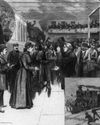
nellie Bly Journalist
nellie Bly's first newspaper articles appeared in print when she was just 20 years old.

Arabella Mansfield -Lawyer
Arabella Mansfield started out life as Belle Babb (1846-1911). She grew up in a Midwest family that valued education. In 1850, her father left to search for gold in California. He died in a tunnel accident a few years later.
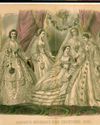
Sarah Josepha Hale Editor
Long before Vogue or Glamour caught women's attention, Godey's Lady's Book introduced the latest fashions.
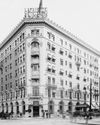
Louise Blanchard Bethune - Architect
Louise Blanchard Bethune (1856-1915) showed early promise in math. Lucky for her, her father was the principal and a mathematics teacher in a school in Waterloo, New York. Instead of going to school, Louise's father taught her at home until she was 11 years old. She also discovered a skill for planning houses. It developed into a lifelong interest in architecture and a place in history as the first professional female architect in the United States.
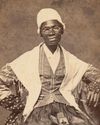
Sojourner Truth Speaker
There was a time when slavery wastes abolished the institution over a number of decades. New York abolished slavery in 1827. Isabella Baumfree (c. 1797-1883) was born enslaved in Hurley, New York. When she was nine, she was taken from her parents and sold. She then was sold several more times. Some of her owners were cruel and abused her. During that time, she had several children.
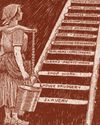
Getting Started
In this editorial cartoon, a young 19th-century woman must overcome the obstacle of carrying a heavy burden while climbing a multirung ladder before she can achieve \"Equal Suffrage.\"
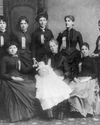
Leonora M. Barry - Investigator
When Leonora M. Barry (1849-1923) was a young girl, her family left Ireland to escape a famine. They settled in New York. Barry became a teacher. In 1872, she married a fellow Irish immigrant. At that time, married women were not allowed to work. So, Barry stayed home to raise their three children.

Finding a New Path
For many Americans, this month's mystery hero represents the ultimate modern trailblazer. She is recognized by just her first name.
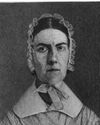
The Grimké Sisters Abolitionists
Every night, Dinah was supposed to brush the E hair of her mistress, Sarah Moore Grimké (1792-1873). But one night, 12-year-old Sarah stopped Dinah. She wanted to help Dinah instead. They had to be quiet so they wouldn't get caught. It was 1804 in Charleston, South Carolina. The Grimkés were among Charleston's major slaveholding families. Strict laws regulated the behavior of both master and enslaved people.
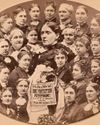
Frances Willard Leader
During Frances Willard's lifetime (1839-1898), she was the best-known woman in America: She headed the largest women's organization in the worldthe Woman's Christian Temperance Union (WCTU). In that role, her abilities shone as a social activist, a dynamic speaker, and a brilliant organizer. She educated women on how to run meetings, write petitions, give speeches, and lobby state and federal legislators.
